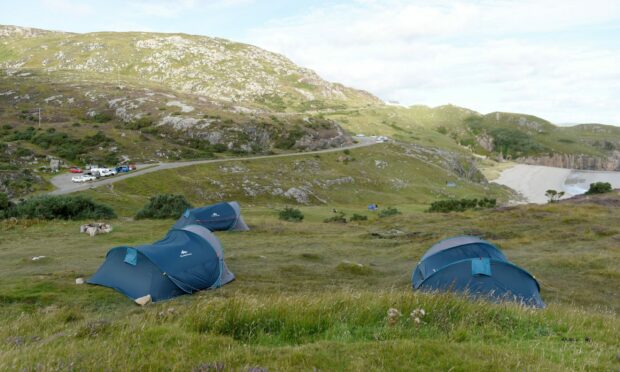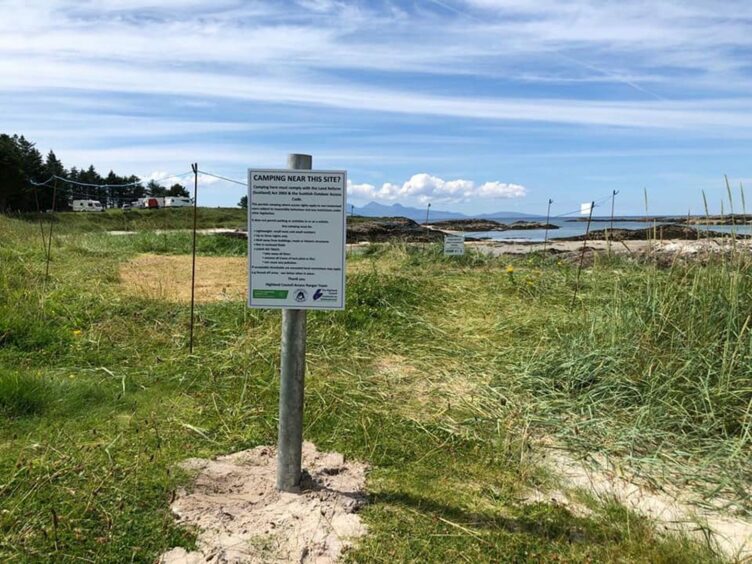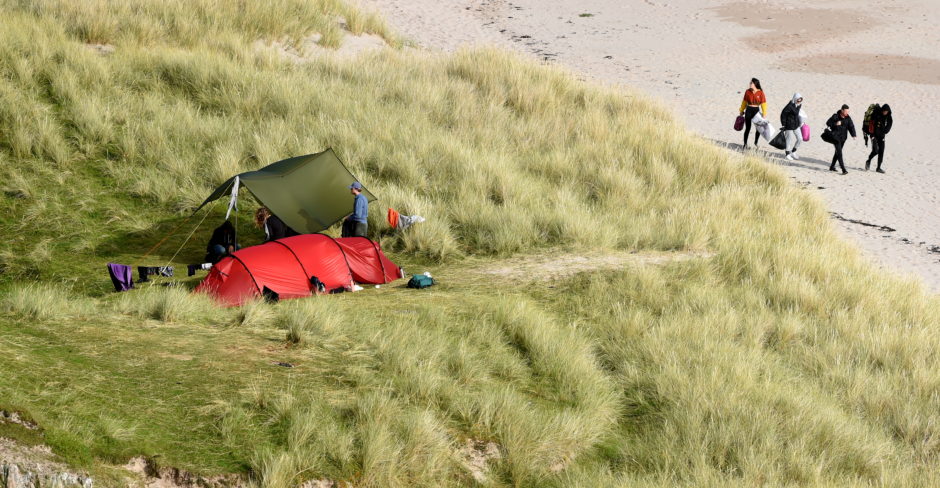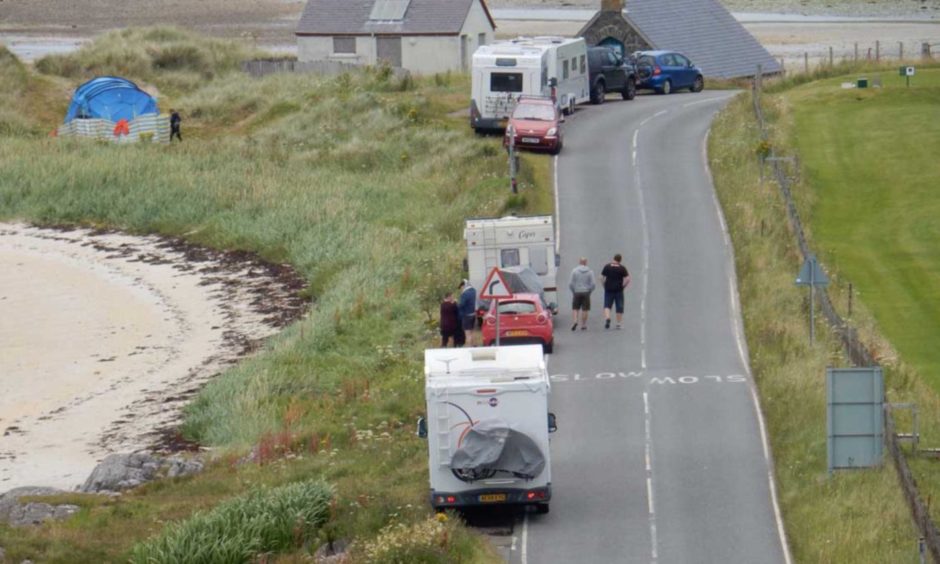Camping restrictions have been put in place at two Highland beaches with the aim of protecting the landscapes.
Highland Council’s access rangers are urging people to help look after the “fantastic places” so they can continue to be enjoyed in the future.
Temporary fencing has been put in place at Traigh Beach at Arisaig and Ceannabeinne at Durness to deter campers until the vegetation is able to recover.
The dune and machair areas at both beaches have been closed off by rangers, but visitors are still welcome on the sands.
‘Respect these areas’
In a post shared online, the rangers wrote: “Some parts of Highlands just can’t take it anymore. Even responsible camping in the same place week after week can cause damage to nature.
“We are asking that people respect these areas and camp elsewhere.”
Signs have also been erected at both beaches to explain why the restrictions have been put in place and to clearly show which areas must be avoided.
A Highland Council spokeswoman said: “To protect certain visitor hotspots from the cumulative impact that repetitive wild camping, fire and ground damage has created in certain popular visitor areas, the rangers team in keeping with the Scottish Outdoor Access Code ‘local guidance’ measures and in agreement with the Local Access Forum, Naturescot and the relevant land managers have recently installed temporary protection zones to allow the vegetation time to recover.
“We are asking the public to respect the signage, reasons for the protected zones and to select a wild camping area in keeping with the Scottish Outdoor Access Code (SOAC), well away from the damaged areas.
“There are signs explaining why this has been temporarily implemented and the affected areas are clearly marked with visible fencing.
“Please play your part in assisting us to protect these places of outstanding beauty, so we can continue to enjoy them for years to come.”
‘Camping should have minimal impact’
Bridget Jones, NatureScot’s recreation manager, added: “At NatureScot we want everyone to have the opportunity to enjoy Scotland’s countryside and connect to nature but it’s important that this is done responsibly to help protect our wonderful landscapes and environment.
“The Scottish Outdoor Access Code is clear that wild camping should have minimal impact on the surrounding environment and countryside. Camping should be lightweight, done in small numbers and only for two or three nights in once place.
“Visitors should be aware too of the cumulative effects of many people camping in the same place over a period of time. This is what is being experienced in some of our busiest visitor ‘hot spots’, resulting in damage to vegetation, including grassland areas, from repeated pitching of tents, sometimes combined with BBQ or fire rings.
“As a result of this, in Arisaig and Durness visitors are being asked by Highland Council rangers not to pitch their tents on a select and small number of damaged wild camping spots, where temporary fenced cordons have been erected to protect the habitat and facilitate recovery, along with advisory signage to guide the public.”
Continuous damage to land
Last summer, the Arisaig area was highlighted as a location being “overwhelmed” by staycation visitors.
In the area, including Traigh Beach, drivers of motorhomes and caravans were spotted parking on fragile ground, alongside burnt areas of grassland.
Meanwhile, Ceannabeinne is on the NC500 driving route which attracts thousands of people every year, especially during the summer months.
Reports of rubbish being dumped at spots along the route have been made, which is also having a negative impact on the landscape.














Conversation